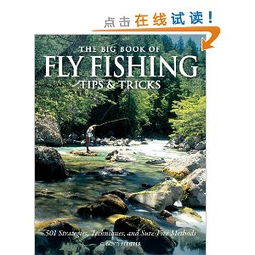Introduction: Fishing is a timeless activity that offers numerous benefits for children, including improving their patience, concentration, and understanding of nature. Among the various fishing techniques, pole fishing is particularly popular due to its simplicity and effectiveness. This article will provide you with valuable tips and techniques to help children learn how to master the art of pole fishing.
Selecting the Right Equipment: Before starting, it's essential to choose the appropriate equipment for children. Here are some recommendations:
a. Fishing Rod: Opt for a lightweight and flexible rod that is easy for children to handle. The length of the rod should be suitable for their height and strength.
b. Reel: A simple spinning reel is ideal for beginners. Ensure the reel is lightweight and easy to operate.
c. Line: Use a monofilament line with a thickness that matches the rod's strength. The line should be strong enough to handle the fish but not too thick to cause difficulty in casting.
d. Lures and Bait: Choose colorful and vibrant lures or natural bait that attract fish. Live bait, such as worms or crickets, can be a great option for beginners.
Casting Techniques: Casting is a fundamental skill in pole fishing. Here's a step-by-step guide to help children learn the proper casting technique:
a. Hold the rod: Grip the rod with a comfortable and secure grip, using both hands. The distance between your hands should be about shoulder-width apart.
b. Backcast: Begin by lifting the rod tip back over your shoulder, keeping the line taut. Swing the rod back in a smooth, circular motion, allowing the line to unravel naturally.
c. Forward cast: After completing the backcast, lower the rod tip towards the water, then quickly sweep it forward with a smooth, continuous motion. The line should fly out in a straight line towards the target.
d. Practice: Encourage children to practice casting in a wide open space, such as a park or beach, to get a feel for the technique.
Luring and Baiting Techniques: To attract fish, it's crucial to learn how to use lures and bait effectively. Here are some tips:
a. Lures: Attach the lure to the hook using a secure knot, such as the improved clinch knot. Experiment with different retrieves and speeds to see what works best for the fish you're targeting.
b. Bait: If using live bait, ensure it's fresh and well-cared for. Place the bait on the hook, leaving a small portion exposed to attract fish.
c. Presenting the bait: Once you've cast your line, let it sink to the desired depth. Then, gently twitch or move the rod to mimic the natural movement of the bait.
Patience and Observation: One of the most important aspects of pole fishing is patience. Children should be taught to observe their surroundings and stay focused on the task at hand. Here are some tips:
a. Stay still: Avoid unnecessary movements that might spook the fish.

b. Pay attention to the rod: Teach children to watch the rod for any signs of a bite, such as a sudden movement or a tap on the line.
c. Wait for the fish to bite: Once you feel a bite, gently reel in the line and set the hook with a firm but gentle pull.
Safety First: Safety should always be a priority when teaching children how to fish. Here are some safety tips:
a. Always supervise children while fishing.
b. Teach them to respect wildlife and the environment.
c. Wear appropriate clothing and footwear to protect against the elements.
Conclusion: Learning how to pole fish can be a fun and rewarding experience for children. By following these tips and techniques, you can help them master the art of pole fishing while enjoying the benefits of this timeless activity. Remember to encourage patience, observation, and safety, and soon your child will be a skilled and confident angler.












